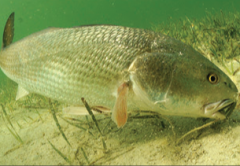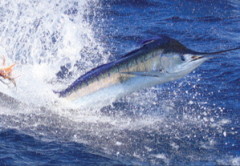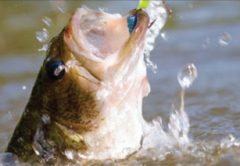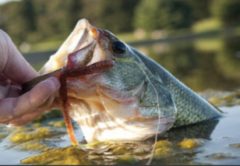The Mullet Run Arrives! As the tropical storm season wanes on Florida’s east central coast, passing summer squalls and higher water levels have impacted the seasonal fishing conditions we traditionally experience in October. Combined with a steady northeasterly fetch, the lagoon water levels are the highest seen in years.
If weather permits, near-shore opportunities are the best you will see all year. Along the beaches, target areas of concentrated bait schools for a mixed bag of snook, tarpon, kingfish, cobia, jack crevalle, oversized redfish, and sharks. Additionally, snook fishing in the surf has improved as the baitfish move south along the beach. Also look for schools of glass minnows to begin showing up bringing larger Spanish mackerel, bluefish, and tarpon with them.
In the north Indian River and Mosquito Lagoons, higher water levels will allow anglers to venture into areas normally inaccessible during the spring and summer months. Look for slot redfish in close to the edges along the shoreline shadowing pods of finger mullet, and for the larger redfish staged in deeper water ambush sites where migrating mullet are forced to venture out from the safety of the shallow flats. In deeper water areas, look for ladyfish, spotted sea trout, jacks, and tarpon feeding on schools of glass minnows. Also, if you locate a school of the larger black mullet, try fishing spoons or soft plastic baits deep under the school. Even though, mullet are vegetarians, redfish and sea trout will often mingle in feeding on shrimp and crabs kicked up from the bottom by feeding mullet. If you find heavy mullet schools working the shallows, try fishing with a DOA Shrimp very slowly within the mullet school. As always, if you need more information or have any questions, please contact me. Good luck and good fishing, Captain Tom Van Horn.













